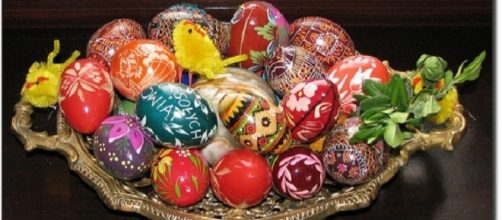The Easter weekend brings a chance for many families to come together and mark the Religious Festival in their own way and for Christians to celebrate the resurrection of Jesus Christ. But just why is it such a “moveable feast” and how did the traditions of Easter eggs and the Easter Bunny come about in the first place?
Variation in dates explained
The apparent confusion over the date – bearing in mind that Christmas and Valentine’s Day are both fixed each year – is easily explained. The Easter date variation depends on when the first Sunday after the first full moon in spring falls, as decreed by the Council of Nicaea in AD 325.
Consequently, Easter Sunday can fall on any date between March 22nd and April 25th.
Most likely dates for Easter
Some dates are more likely than others though judging by some statistics provided by the U.S. Census Bureau. Their analysis covering the period between 1600 and extending forwards up to 2099 indicates that March 24th is least likely, with 31st March and April 16th the most popular for the Easter milestone to fall on.
Easter egg consumption
Most children are probably not so concerned about the origins behind the date, as they look forward to devouring Easter eggs over the holiday period, with figures estimating that as many as 80m chocolate eggs could be consumed. Yet there is also history to be told in that respect.
Symbol of new life
Eggs were traditionally forbidden during the period of Lent – the 40 days from Ash Wednesday leading up to Easter Sunday – and act as a symbol of new life and re-birth. Their symbolic importance is believed to have originated in pagan tradition but has subsequently been adopted into Christian folklore.
Their association as a children’s treat at Easter most likely arises from the church originally strictly not allowing eggs to be eaten during Holy Week (the week before Easter).
Any eggs laid during the week were put aside and decorated, then presented to children as gifts. The Victorians developed the tradition further to create satin-covered cardboard eggs filled with Easter gifts.
Sad story set out in York museum
York Castle Museum has unveiled a rather poignant display this Easter for its visitors.
An uneaten wrapped Terry’s chocolate egg will be shown that was originally intended as a gift in the 1920s for a young boy who sadly died before Easter. Experts believe that it could be one of the oldest wrapped Easter eggs in the world.
Origins of the Easter Bunny
The origins of the Easter Bunny seem to lie in the 19th century, with an association being formed (just as with eggs) to the concept of new life. Rabbits are commonly linked to their strong breeding habits and the legend has been created of the Easter Bunny laying, decorating and hiding eggs as a result. Several countries have developed the notion further, with Switzerland using the cuckoo to deliver their eggs whilst parts of Germany look to the fox instead.

